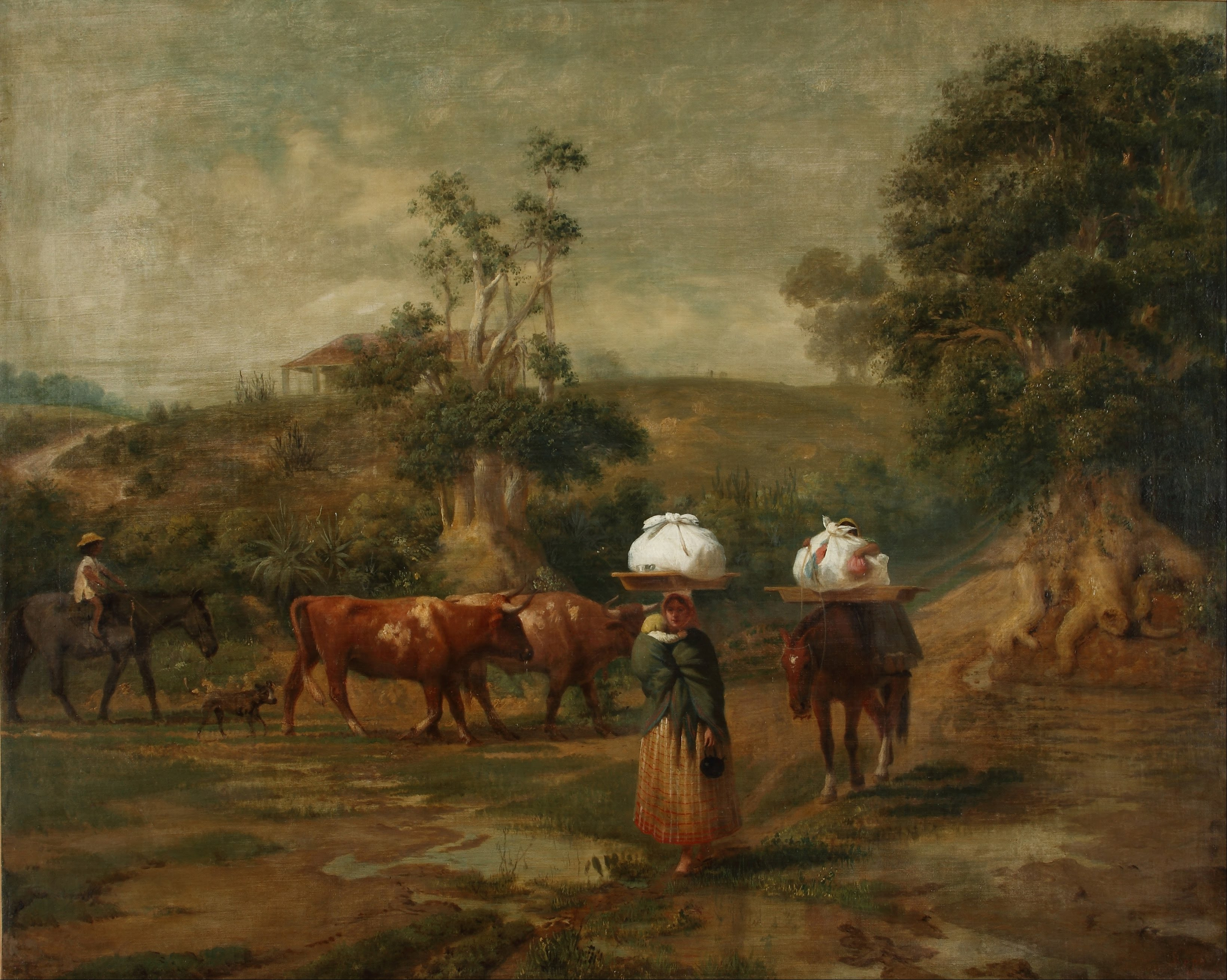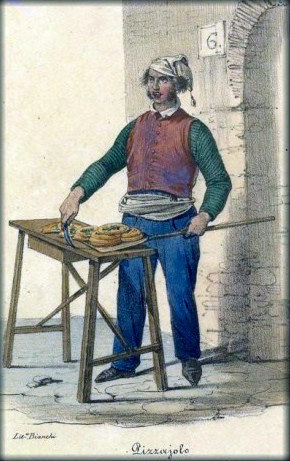|
René Pontoni
René Alejandro Pontoni (May 18, 1920, in Santa Fe, Argentina – May 14, 1983) was an Argentine footballer. He played club football in Argentina, Colombia and Brazil as well as representing the Argentina national football team on 19 occasions. Biography Pontoni started his career with Gimnasia y Esgrima de Santa Fe before joining Newell's Old Boys in 1940. Pontoni made his debut for the Argentina national team in 1942. He went on to score 19 goals in 19 games for his country, helping them to become South American champions in 1945, 1946 and 1947. In 1944 Pontoni joined San Lorenzo where he helped the team to win the Primera División in 1946. In 1948 he suffered a career threatening injury but he recovered, moving to Colombia in 1949 to play for Independiente Santa Fe where he remained until 1952. In 1953 Pontoni moved to Brazil, where he spent one season with Portuguesa in São Paulo before returning to Argentina for one last season with San Lorenzo in 1954. Titles News ... [...More Info...] [...Related Items...] OR: [Wikipedia] [Google] [Baidu] |
Santa Fe, Argentina
Santa Fe de la Vera Cruz (; usually called just Santa Fe, lit. "Holy Faith") is the capital city of the provinces of Argentina, province of Santa Fe Province, Santa Fe, Argentina. It is situated in north-eastern Argentina, near the junction of the Paraná River, Paraná and Salado River, Argentina, Salado rivers. It lies from the Hernandarias Subfluvial Tunnel that connects it to the city of Paraná, Argentina, Paraná. The city is also connected by canal with the port of Colastiné on the Paraná River. Santa Fe de la Vera Cruz has about 391,164 inhabitants per the . The metropolitan area has a population of 653,073, making it the eighth largest in Argentina. Santa Fe de la Vera Cruz is linked to Rosario ( to the south), the largest city in the province, by the Brigadier Estanislao López Highway and by National Route 11 (Argentina), National Route 11, which continues south towards Buenos Aires. Córdoba, Argentina, Córdoba is about ( west of Santa Fe, through the :es:Ruta ... [...More Info...] [...Related Items...] OR: [Wikipedia] [Google] [Baidu] |
São Paulo
São Paulo (; ; Portuguese for 'Paul the Apostle, Saint Paul') is the capital of the São Paulo (state), state of São Paulo, as well as the List of cities in Brazil by population, most populous city in Brazil, the List of largest cities in the Americas, Americas, and both the Western Hemisphere, Western and Southern Hemispheres. Listed by the Globalization and World Cities Research Network (GaWC) as an global city, alpha global city, it exerts substantial international influence in commerce, finance, arts, and entertainment. It is the List of largest cities#List, largest urban area by population outside Asia and the most populous Geographical distribution of Portuguese speakers, Portuguese-speaking city in the world. The city's name honors Paul the Apostle and people from the city are known as ''paulistanos''. The city's Latin motto is ''Non ducor, duco'', which translates as "I am not led, I lead." Founded in 1554 by Jesuit priests, the city was the center of the ''bandeirant ... [...More Info...] [...Related Items...] OR: [Wikipedia] [Google] [Baidu] |
Argentine Men's Footballers
Argentines, Argentinians or Argentineans are people from Argentina. This connection may be residential, legal, historical, or cultural. For most Argentines, several (or all) of these connections exist and are collectively the source of their being Argentine. Argentina is a multiethnic society, home to people of various ethnic, racial, religious, denomination, and national origins, with the majority of the population made up of Old World immigrants and their descendants. As a result, Argentines do not equate their nationality with ethnicity, but with citizenship and allegiance to Argentina. Aside from the indigenous population, nearly all Argentines or their ancestors immigrated within the past five centuries. Among countries in the world that have received the most immigrants in modern history, Argentina, with 6.6 million, ranks second to the United States (27 million), and ahead of other immigrant destinations such as Canada, Brazil and Australia. Ethnic groups Overvie ... [...More Info...] [...Related Items...] OR: [Wikipedia] [Google] [Baidu] |
Footballers From Santa Fe, Argentina
A football player or footballer is a sportsperson who plays one of the different types of football. The main types of football are association football, American football, Canadian football, Australian rules football, Gaelic football, rugby league, and rugby union. It has been estimated that there are 250 million association football players in the world, and many play other forms of football. Career Jean-Pierre Papin has described football as a "universal language". Footballers across the world and at almost any level may regularly attract large crowds of spectators, and players are the focal points of widespread social phenomena such as association football culture. Footballers usually begin as amateurs and the best players progress to become professional players. Normally they start at a youth team (any local team) and from there, based on skill and talent, scouts offer contracts. Once signed, some learn to play better football and a few advance to the senior or profession ... [...More Info...] [...Related Items...] OR: [Wikipedia] [Google] [Baidu] |
Belgrano, Buenos Aires
Belgrano is a northern ''Barrios of Buenos Aires, barrio'' or neighborhood of Buenos Aires, Argentina. It is made up of Middle class, middle and upper class people. Belgrano has three distinct areas: the main one that is made up of apartment buildings, Belgrano "R" which is a leafy suburb area with English architecture, and Buenos Aires' Barrio Chino (Buenos Aires), Chinatown. Location The barrio of Palermo, Buenos Aires, Palermo is to the southeast; Núñez, Buenos Aires, Núñez is to the northwest; Coghlan, Buenos Aires, Coghlan, Villa Urquiza, Villa Ortúzar and Colegiales are to the southwest. History Belgrano was named after Manuel Belgrano, a politician and military leader who created the national flag of Argentina. In 1820, at Belgrano's death, Buenos Aires Province, Buenos Aires' legislature introduced a law to name the next town to be founded after him. This happened in 1855, when the Buenos Aires government, fearful that relatives of Juan Manuel de Rosas would di ... [...More Info...] [...Related Items...] OR: [Wikipedia] [Google] [Baidu] |
Pizza
Pizza is an Italian cuisine, Italian, specifically Neapolitan cuisine, Neapolitan, dish typically consisting of a flat base of Leavening agent, leavened wheat-based dough topped with tomato, cheese, and other ingredients, baked at a high temperature, traditionally in a wood-fired oven. The term ''pizza'' was first recorded in 997AD, in a Latin manuscript from the Southern Italy, southern Italian town of Gaeta, in Lazio, on the border with Campania. Raffaele Esposito is often credited for creating the modern pizza in Naples.Arthur Schwartz, ''Naples at Table: Cooking in Campania'' (1998), p. 68. .John Dickie, ''Delizia!: The Epic History of the Italians and Their Food'' (2008), p. 186.Father Giuseppe Orsini, Joseph E. Orsini, ''Italian Baking Secrets'' (2007), p. 99. In 2009, Neapolitan pizza was registered with the European Union as a traditional speciality guaranteed (TSG) dish. In 2017, the art of making Neapolitan pizza was included on UNESCO's list of intangible cultura ... [...More Info...] [...Related Items...] OR: [Wikipedia] [Google] [Baidu] |
Mario Boyé
Mario Emilio Heriberto Boyé Auterio (30 July 1922 – 21 July 1992) was an Argentine footballer. A powerful winger or striker, he played for Boca Juniors, Racing Club de Avellaneda and Huracán in Argentina, Genoa in Italy and Millonarios in Colombia. Nicknamed ''El Atómico'' (The Atomic One), he started playing in the youth division of Boca Juniors to debut in first division on 8 June 1941 in the victory against Independiente, and scoring his first goal a week later against Huracán. With Boca he won the 1943 and 1944 Argentine leagues, and was the league's top-scorer in 1946 with 24 goals. He moved to Italy where he became ''"Il Matadore"'' (The Killer), but returned to Argentina four seasons later. After winning the 1951 league with Racing and playing one season for Huracán, he returned to Boca to retire a year later. He played 228 matches for Boca in all competitions, scoring 124 goals. He was the top scorer in the Copa del Atlántico 1947 with 5 goals, a non-CONMEBOL t ... [...More Info...] [...Related Items...] OR: [Wikipedia] [Google] [Baidu] |
Boca Juniors
Club Atlético Boca Juniors () is an Argentine professional sports club based in La Boca, a neighbourhood of Buenos Aires. The club is best known for its men's professional Association football, football team which, since its promotion in 1913 Club Atlético Boca Juniors season, 1913, List of unrelegated association football clubs, has always played in the Argentine Primera División. The team has won 74 official titles, the most by any Argentine club. National titles won by Boca Juniors include 35 Argentine Primera División, Primera División championships,Campeones de la Primera División on AFA website and 17 List of Argentine football national cups, domestic cups. Boca Juniors also owns an honorary title awarded by the Argentine Football Association for their successful 1925 Boca Junior ... [...More Info...] [...Related Items...] OR: [Wikipedia] [Google] [Baidu] |
Torneio Rio–São Paulo
The Torneio Rio–São Paulo () was a traditional Brazilian football competition contested between São Paulo and Rio de Janeiro teams from 1933 to 1966, in 1993 and from 1997 to 2002. Organized by the state football associations of the state of São Paulo and the city of Rio de Janeiro (after unification of the states of Guanabara and Rio de Janeiro), the official name of the tournament became the ''Torneio Roberto Gomes Pedrosa'' in 1954, named after former goalkeeper of the Brazilian national team and president of the São Paulo Football Association who died in that year. This name was not broadly popularized used until 1967 when the tournament was first opened to teams from the states of Minas Gerais, Paraná and Rio Grande do Sul, and later also from Pernambuco and Bahia. The Torneio Roberto Gomes Pedrosa, also often referred to as ''Taça de Prata'' (Silver Cup) and contested until 1970, is generally considered the predecessor of the Brazilian Football Championship which ... [...More Info...] [...Related Items...] OR: [Wikipedia] [Google] [Baidu] |
Copa Colombia
The Copa Colombia (); officially known as Copa BetPlay Dimayor is an annual football tournament in Colombia. It is contested by the 36 professional clubs affiliated to the División Mayor del Fútbol Profesional Colombiano (DIMAYOR) and is the nation's domestic cup competition, equivalent to the FA Cup in England or the Copa del Rey in Spain. The Copa Colombia was played for the first time in 1950, and it has been played consecutively since its revival in 2008. Throughout history, different championships have been known under the Copa Colombia name: * A double-elimination, knockout tournament parallel to the Colombian league, which was played from 1950–51 to 1952–53. * A tournament that was played under a round-robin group format in which teams advanced to a final group, which was also named as ''Copa Presidente de la República'', played from late 1956 to early 1957. * The name of a commemorative trophy awarded in 1963, which is not considered a Copa Colombia title. * A t ... [...More Info...] [...Related Items...] OR: [Wikipedia] [Google] [Baidu] |



